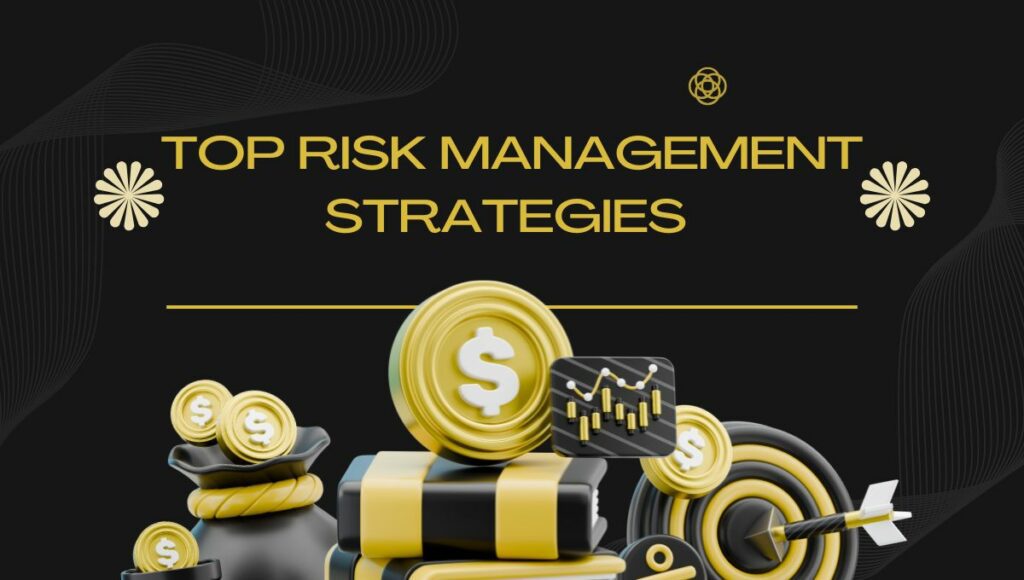In the high-stakes world of investment banking, effective risk management strategies are not just best practices—they're business imperatives. With market volatility, complex transactions & increasing regulatory pressure, investment bankers must anticipate, assess & act on potential risks to ensure financial stability & long-term profitability… These challenges call for structured frameworks, disciplined execution & smart tools.
This blog dives deep into the most effective risk management strategies every investment banker should master… From financial risk management to regulatory compliance in finance, we’ll explore how proactive planning shapes better outcomes.
1. Understanding the Nature of Risk in Investment Banking
Investment banks operate in a dynamic-space involving capital markets, M&A, trading & underwriting… Each of these activities brings unique exposures to market, credit, operational & reputational risks.
To manage this complexity, banks conduct robust investment banking risk assessment exercises… These assessments form the foundation of effective risk mitigation in banking, enabling firms to stay ahead of emerging-threats.
2. Building a Comprehensive Risk Management Framework
A successful framework includes risk identification, quantification, monitoring & control mechanisms… These elements must be embedded across all functions, from trading desks to compliance teams.
By integrating these steps into daily operations… investment banks shift from reactive damage control to proactive risk management strategies… It’s about building resilience before risk strikes.
3. Market Risk Strategies: Staying Ahead of Market Volatility
Market risk strategies are used to protect investment banks from potential losses due to price fluctuations in equities, currencies or interest rates… Common tools include Value-at-Risk (VaR), stress testing & derivative hedging.
For instance, traders hedge large equity exposures using options to guard against sharp downturns… These tools provide insights into potential losses & guide capital allocation decisions.
An effective set of market risk strategies is essential to creating strong portfolios & long-term investor confidence… They’re also a key part of ongoing investment banking risk assessment.
4. Managing Credit Risk in Banking Operations
Credit risk in banking refers to the chance that a borrower or counterparty may fail to meet obligations… This is particularly relevant for loan underwriting, bond issuance & derivatives trading.
To manage this, banks use counterparty scoring models, credit limits & enforceable contracts… Collateral requirements further strengthen their position.
Addressing credit risk in banking isn’t just about preventing losses… It also ensures compliance with regulatory expectations & strengthens internal financial risk management processes.
5. Operational Risk Management: Addressing Internal Weaknesses
Operational risk management focuses on risks from system failures, process errors or fraud… It’s one of the most overlooked yet damaging areas of risk in investment banking.
Banks implement process automation, internal audits & cybersecurity controls to address these vulnerabilities… Employee training is also critical to reduce human error & improve accountability.
With the increasing digitalisation of banking, operational risk management is more important than ever… A small technical glitch can escalate into a major disruption.
6. Financial Risk Management Tools & Techniques
Financial risk management brings together a broad toolkit to mitigate threats to profitability… It spans everything from currency risk to liquidity crunches.
Banks deploy hedging strategies using derivatives, diversify their asset base & conduct scenario planning… Real-time dashboards now provide risk teams with early alerts & actionable data.
These tools support data-driven decision-making & more precise risk management strategies… Strengthening both internal operations & client trust.
7. Regulatory Compliance in Finance: Staying on the Right Side of the Law
Regulatory compliance in finance is a critical function in today’s oversight-heavy environment… Investment banks are governed by regulations from bodies like SEBI, RBI, the SEC & global frameworks like Basel III.
To remain compliant, banks establish dedicated compliance teams, use automated monitoring systems & maintain rigorous documentation… Regular audits help detect gaps early.
Compliance is not just about avoiding penalties… It also reinforces a culture of ethics & enhances overall operational risk management.
To gain deeper insights into back-end regulatory functions, check out the Certified Investment Banking Operations Program by Imarticus Learning… This program covers compliance, settlement operations, risk mitigation techniques & more.
8. Stress Testing & Scenario Planning
Stress testing is a core component of investment banking risk assessment… It allows institutions to simulate hypothetical crises—such as interest rate hikes or geopolitical disruptions—and prepare contingency plans.
Scenario analysis helps banks evaluate their capital adequacy & liquidity buffers… It’s especially valuable for designing robust market risk strategies that withstand extreme shocks.
These exercises are also part of regulatory reporting… Ensuring better regulatory compliance in finance while supporting long-term strategy.
9. Technology’s Role in Real-Time Risk Management
Technology has revolutionised how banks track, assess & respond to risk… AI, machine learning & blockchain now support predictive models & real-time decision-making.
These tools monitor trading patterns, flag irregularities & prevent fraud… They’re especially effective in improving credit risk in banking & automating operational risk management.
Explore more about how analytical frameworks power modern finance in our blog on Factor Investing… It connects data-driven insights to investment outcomes.
10. Fostering a Risk-Aware Culture
Risk management isn’t the job of one team… It must be a shared responsibility across the organisation. Fostering a risk-aware culture involves:
- Transparent communication
- Leadership commitment
- Ethics training
- Strong governance mechanisms
This culture supports better financial risk management & helps teams make decisions that align with institutional values… It also makes regulatory compliance in finance second nature, not an afterthought.
11. Upskilling for Better Risk Roles
To build a successful career in investment banking risk, continuous upskilling is essential… Risk roles today demand proficiency in analytics, compliance, financial modelling & communication.
The Certified Investment Banking Operations Program helps early-career professionals & graduates gain hands-on knowledge in these areas… It’s ideal for mastering risk mitigation in banking, trade lifecycle management & back-office operations.
You can also watch this video for an overview of the critical roles in investment banking operations… Especially relevant for aspiring analysts & associates.
12. The Human Factor in Risk
Soft skills are often underestimated in risk roles… But communication, critical thinking & collaboration play a vital role in delivering results.
Whether you're in compliance, credit or analytics, the ability to influence decisions & clearly articulate risk matters… Read more in our blog on The Role of Soft Skills in Investment Banking Success.
Also, if you're preparing for interviews in the field, check out this guide on Financial Analyst Interview Questions after BCom… It includes insights relevant to risk-focused roles as well.
FAQs
1. What is risk mitigation in banking?
Risk mitigation in banking involves strategies to reduce exposure… identify potential threats… & manage risks that could impact financial performance.
2. Why is investment banking risk assessment important?
Investment banking risk assessment helps uncover hidden vulnerabilities… evaluate transaction risks… & strengthen decision-making frameworks.
3. What does financial risk management include?
Financial risk management covers credit… market… liquidity… & operational risks… helping institutions stay resilient under pressure.
4. How do banks handle credit risk in banking?
To manage credit risk in banking… banks rely on credit scoring systems… collateral requirements… & diversification of loan portfolios.
5. What are some common market risk strategies?
Popular market risk strategies include hedging techniques… derivative instruments… & stress testing to prepare for market shocks.
6. How is operational risk management carried out?
Operational risk management involves monitoring systems… improving internal processes… & reducing human error through training & automation.
7. What role does regulatory compliance in finance play?
Regulatory compliance in finance ensures institutions follow laws… maintain ethical practices… & protect clients against fraud & instability.
8. Which tools support investment banking risk assessment?
Key tools for investment banking risk assessment include Value-at-Risk models… scenario simulations… & real-time analytics platforms.
Final Thoughts: Strategising for Stability & Success
Risk in investment banking can never be eliminated—but it can be managed smartly… By applying robust risk management strategies, institutions build stronger foundations, maintain compliance & protect capital in volatile markets.
From using sophisticated market risk strategies to managing credit risk in banking, every effort counts toward ensuring a safer, more agile business… Integrating financial risk management, smart tech tools & a proactive mindset will keep banks competitive & compliant.If you're looking to deepen your expertise in these areas, the Certified Investment Banking Operations Program is a solid step forward… Equip yourself with the tools to lead confidently in a risk-intensive financial world.












